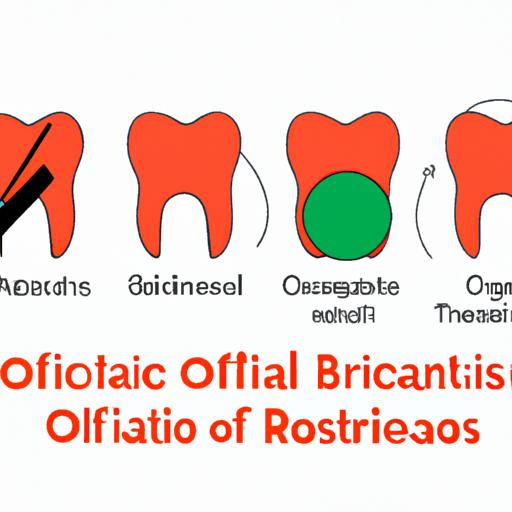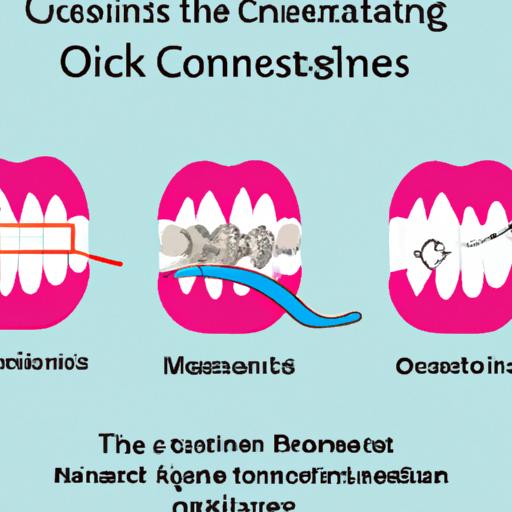Discover the potential risks of orthodontic treatment and how to manage them effectively. Learn about tooth sensitivity, allergies, root resorption, and more.
Introduction
Orthodontic treatment is a common dental procedure aimed at correcting misaligned teeth and jaws. While it offers numerous benefits, it is essential to be aware of the potential risks associated with orthodontic treatment. By understanding these risks, patients can make informed decisions and take necessary precautions. In this article, we will dive into the various risks of orthodontic treatment and provide insights on how to manage them effectively.

Understanding the common risks of orthodontic treatment
Common Risks of Orthodontic Treatment
Tooth and Gum Sensitivity: Navigating Sensitivity During Treatment
One of the most common risks during orthodontic treatment is tooth and gum sensitivity. As the teeth gradually shift position, individuals may experience discomfort and sensitivity. This sensitivity can occur due to pressure exerted on the teeth, changes in tooth orientation, or even the use of orthodontic appliances.
To alleviate tooth sensitivity, it is crucial to practice good oral hygiene. Regular brushing and flossing, along with using a soft-bristled toothbrush and desensitizing toothpaste, can help reduce sensitivity. Additionally, maintaining a balanced diet and avoiding excessively hot or cold foods can minimize discomfort. [^1]
Allergic Reactions: Identifying and Preventing Allergies
Another risk to consider is the possibility of allergic reactions during orthodontic treatment. Some patients may develop allergies to the materials used, such as metal alloys, latex, or dental adhesives. Allergic reactions can manifest as swelling, redness, itching, or even difficulty in breathing.
To prevent allergic reactions, it is crucial to inform your orthodontist about any known allergies or sensitivities before treatment. They can then recommend alternative materials to minimize the risk of an allergic response. Regular communication with your orthodontist will ensure that necessary precautions are taken to prevent any allergic reactions during treatment. [^2]
Root Resorption: Understanding and Minimizing Risks
Root resorption refers to the shortening or loss of tooth roots during orthodontic treatment. While it is a less common risk, it is essential to be aware of its potential complications. Root resorption can occur due to the excessive force applied to the teeth or genetic predisposition.
To minimize the risk of root resorption, orthodontists carefully monitor the progress of treatment and adjust the forces exerted on the teeth accordingly. Regular check-ups and X-rays help detect any signs of root resorption early on, enabling appropriate interventions to prevent further complications. [^3]
Temporomandibular Joint (TMJ) Issues: Managing Discomfort
Temporomandibular joint (TMJ) disorders can arise during orthodontic treatment, causing pain and discomfort in the jaw joint and surrounding muscles. TMJ issues may be a result of the altered bite caused by orthodontic appliances or the adjustment of teeth.
If you experience symptoms such as jaw pain, clicking or popping sounds, or difficulty in opening or closing your mouth, it is crucial to inform your orthodontist promptly. They can provide guidance on exercises, recommend pain relief measures, or make necessary adjustments to alleviate TMJ discomfort during treatment. [^4]

Exploring the less common risks of orthodontic treatment
Less Common Risks of Orthodontic Treatment
Enamel Demineralization: Protecting Your Tooth Enamel
Enamel demineralization, although less common, is a risk associated with orthodontic treatment. It occurs when bacteria break down sugars and produce acids that erode the tooth enamel, leading to white spots or cavities.
To prevent enamel demineralization, maintaining good oral hygiene practices is vital. Regular brushing, flossing, and using fluoride mouthwash can help protect the teeth during treatment. Additionally, reducing the consumption of sugary foods and drinks can minimize the risk of enamel demineralization. [^5]
Allergic Reactions to Orthodontic Elastics or Appliances: Addressing Sensitivities
In some cases, patients may develop allergies specifically to orthodontic elastics or appliances. These allergies can manifest as itching, rashes, or swelling in the mouth area.
If you notice any signs of an allergic reaction, such as discomfort or irritation, it is important to consult your orthodontist immediately. They can assess the situation and suggest alternative materials or techniques to address your sensitivity while continuing treatment effectively. [^6]
Discomfort and Pain: Managing Temporary Discomfort
Orthodontic treatment can sometimes cause temporary discomfort and pain, especially after adjustments or the placement of new appliances. This discomfort is a normal part of the teeth-straightening process and usually subsides within a few days.
To manage discomfort and pain, over-the-counter pain relievers can be used as directed by your orthodontist. Additionally, sticking to a soft food diet for a few days and avoiding hard or sticky foods can help minimize discomfort. Applying a warm compress to the affected area can also provide temporary relief. [^7]
Psychological Impact: Nurturing Emotional Well-being
Orthodontic treatment can have a psychological impact on individuals, particularly during the initial stages when changes to appearance are evident. Some patients may experience feelings of self-consciousness or anxiety.
It is essential to remember that orthodontic treatment is a journey towards a healthier and more confident smile. Seeking support from friends, family, or participating in support groups can help manage any emotional challenges. Maintaining open communication with your orthodontist and discussing any concerns can also contribute to a positive treatment experience. [^8]
Conclusion
In conclusion, orthodontic treatment offers significant benefits in achieving a healthy and aesthetically pleasing smile. However, it is crucial to acknowledge and understand the potential risks associated with such treatment. By proactively addressing these risks and maintaining regular communication with your orthodontist, you can navigate orthodontic treatment with confidence and minimize any potential complications. Remember, the rewards of orthodontic treatment far outweigh the risks when managed effectively. Take the first step towards a beautiful smile and book a consultation with your orthodontist today!
Find more dental tips and guides here
Read more about TAD orthodontic treatment
Discontinuation of Orthodontic Treatment Form
Learn more about frenectomy and its relation to orthodontic treatment







